The seven most effective wearable metrics for training load recovery are heart rate variability (HRV) for measuring autonomic nervous system function, sleep stage monitoring with nightly recovery scores, excess post-exercise oxygen consumption (EPOC) for training stress assessment, composite recovery status scores integrating multiple parameters, movement efficiency tracking for biomechanical fatigue detection, blood oxygen saturation levels indicating tissue oxygen delivery, and skin temperature variations revealing inflammatory responses. These metrics transform raw physiological data into actionable recovery insights that’ll optimize your training decisions.
Heart Rate Variability Analysis for Autonomic Recovery Assessment
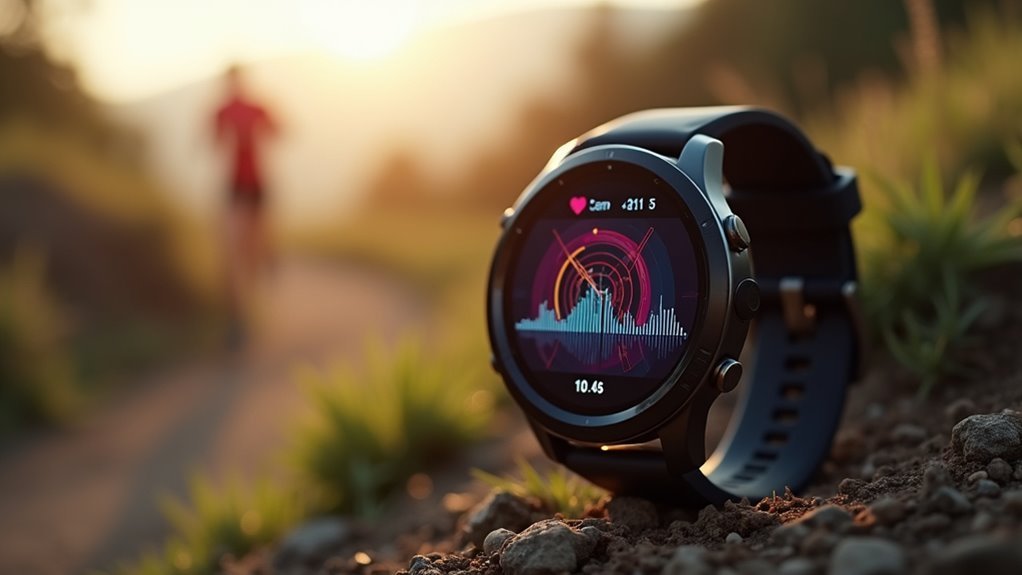
The rhythm between your heartbeats tells a story about your body’s readiness to train. Heart Rate Variability (HRV) measures the variation in time between heartbeats, directly reflecting your autonomic nervous system’s function.
When your HRV is higher, you’re experiencing better recovery status and increased parasympathetic activity. Lower HRV values indicate stress and reduced recovery readiness through increased sympathetic activity.
You can use the RMSSD metric to assess these variations effectively. Unlike training load alone, HRV provides additional recovery insights that help you avoid overtraining. Daily HRV tracking enhances your visibility into overall fatigue levels that may not be apparent through subjective feelings alone.
Sleep Stage Monitoring and Nightly Recovery Score Calculation
While HRV reveals your autonomic recovery status, sleep stage monitoring provides the complete picture of your nightly restoration process.
Modern wearables use advanced sensors like skin temperature and optical photoplethysmography to classify sleep stages accurately, moving beyond basic motion-based tracking that often misclassified wake as sleep.
Advanced sensor technology in modern wearables has eliminated the inaccuracies of basic motion tracking for precise sleep stage classification.
Your device’s machine learning algorithms process data from multiple sensors—temperature, electrodermal activity, and ambient light—to calculate nightly recovery scores.
These scores incorporate sleep duration, stage distribution, and continuity to assess your overall recovery quality. Understanding long-term trends rather than daily fluctuations provides more meaningful insights into your recovery patterns.
However, you’ll notice recovery score variability between different devices due to algorithmic differences.
When compared to polysomnography, consumer trackers show moderate agreement with Cohen’s kappa values of 0.4-0.6, indicating fair accuracy in sleep stage detection.
Training Load Quantification Using Excess Post-Exercise Oxygen Consumption
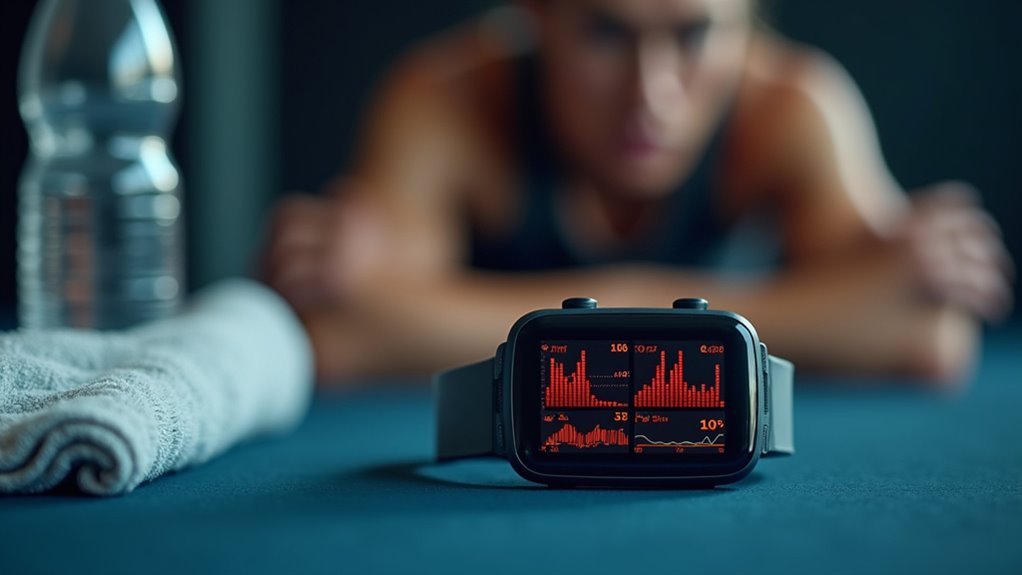
You’ll find that EPOC measurements provide remarkably accurate training load quantification by capturing your body’s oxygen debt after exercise, directly reflecting the metabolic stress you’ve imposed.
Your wearable device translates this excess oxygen consumption into actionable data, allowing you to adjust training intensity based on your actual physiological response rather than guesswork. Modern devices use heart rate algorithms to predict EPOC values in real-time, eliminating the need for laboratory gas analysis.
When your EPOC values consistently spike higher than expected, it’s time to dial back your training intensity to prevent overreaching and optimize your recovery timeline.
EPOC Measurement Accuracy
How accurately can wearable devices measure EPOC compared to traditional laboratory methods? Modern wearables use heart rate monitoring to estimate EPOC, offering remarkable precision within 0.89 of traditional measurements. However, accuracy depends heavily on your monitoring method.
| Measurement Method | Accuracy Level | Convenience |
|---|---|---|
| Laboratory Testing | Highest | Low |
| Chest-worn HR Strap | High | Medium |
| Wrist-based HR | Moderate | High |
| Consumer Wearables | Variable | Highest |
You’ll get the most accurate EPOC estimates using chest-worn heart rate straps rather than wrist-based sensors. While laboratory methods remain the gold standard, they’re impractical for daily use. Modern estimation methods sacrifice some precision for convenience, making EPOC monitoring accessible and noninvasive for regular training load assessment. The EPOC prediction method was developed through rigorous research involving 158 test subjects who engaged in various exercises with different durations and intensities.
Training Intensity Adjustments
Since EPOC directly reflects your body’s metabolic demands during recovery, it serves as a precise indicator for adjusting training intensity in real-time.
When you’re performing heavy training with short rest intervals, you’ll increase anaerobic pathway demands, leading to higher EPOC values that signal greater recovery needs.
You can optimize your workout intensity by monitoring EPOC to balance overload and recovery effectively.
Heavy resistance training, circuit workouts, and HIIT sessions will generate significant EPOC responses, indicating when you’ve pushed your energy systems hard enough.
By tracking these measurements, you’ll know when to dial back intensity or extend rest periods. Modern devices compile your 7-day EPOC measurements to provide a comprehensive view of your accumulated training stress over the past week.
Different exercise types produce varying EPOC levels, allowing you to adjust training loads based on your body’s actual physiological responses rather than guesswork.
Composite Recovery Status Scores From Multi-Parameter Data Integration
When your wearable device calculates a single recovery score, it’s integrating multiple physiological parameters through complex algorithms that often remain hidden from view.
These composite scores combine heart rate variability, sleep duration, physical activity levels, and stress measurements into one simplified number. However, different devices weight these parameters differently, creating inconsistencies between brands.
Different brands weigh physiological parameters differently in their recovery algorithms, creating inconsistent scores from the same data.
You’ll find that HRV serves as a vital component since it reflects your autonomic nervous system’s response to stress and recovery.
Sleep consistency and quality also heavily influence your score, while real-time stress monitoring adds another layer of complexity.
The challenge lies in these proprietary “black-box” algorithms lacking transparency and clinical validation. Research has shown that many wearable algorithms require more rigorous academic validation before being implemented in consumer devices.
Without standardized methods across devices, you’re getting varying interpretations of the same physiological data, potentially affecting your training decisions.
Movement Efficiency and Biomechanical Fatigue Detection Metrics
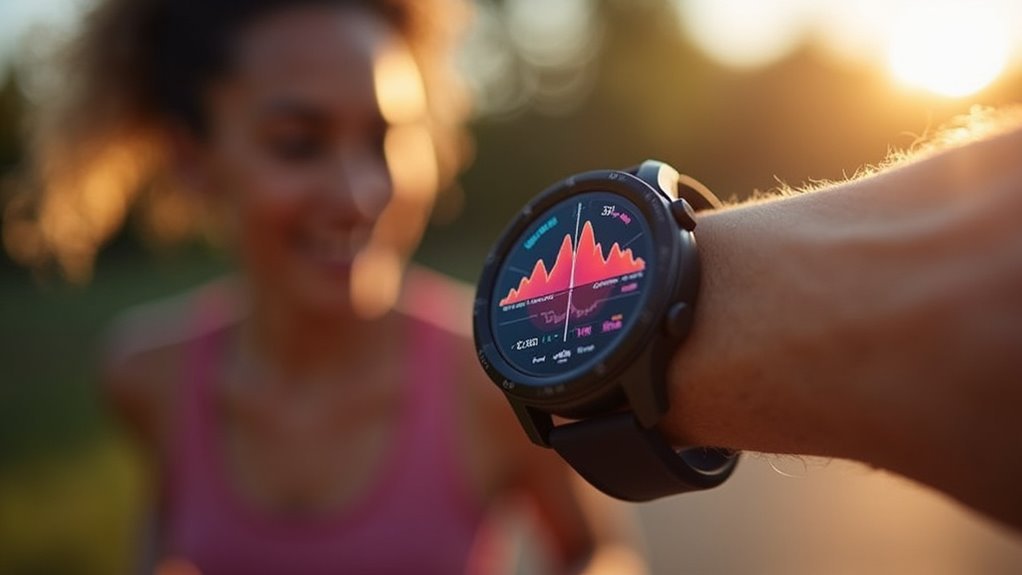
Beyond the composite scores that aggregate your physiological data, wearable devices now capture detailed biomechanical parameters that reveal how efficiently you’re moving and when fatigue begins compromising your form.
Ground contact time and stride patterns shift as you tire, while EMG amplitude increases when muscles work harder to maintain performance. These sensors track joint angles, revealing restricted range of motion that signals brewing injuries.
Your gait analysis exposes asymmetries that develop under fatigue, and balance tests detect neuromuscular deterioration affecting coordination.
High-sensitivity sensors capture micro-level changes in muscle fiber recruitment patterns, providing early warnings before performance drops. Multi-modal data analysis from various physiological signals increases the precision of fatigue detection compared to single-source monitoring.
Real-time machine learning algorithms process this biomechanical data instantly, alerting you when movement efficiency degrades and recovery becomes necessary.
Blood Oxygen Saturation and Physiological Stress Indicators
While biomechanical sensors reveal how your movement patterns deteriorate under fatigue, blood oxygen saturation (SpO2) measurements expose the underlying physiological stress that’s driving this decline.
Your SpO2 levels indicate oxygen delivery efficiency to tissues, making pulse oximetry a powerful non-invasive recovery monitoring tool.
Low morning SpO2 readings (around 93%) combined with poor sleep quality signal insufficient recovery or overtraining risk. You can validate subjective fatigue feelings through SpO2 data, supporting decisions to reduce training intensity.
Post-exercise SpO2 recovery time serves as a cardiorespiratory fitness marker—faster recovery suggests better physiological resilience. However, wearable devices are more accurate for measuring saturation at rest than during movement due to motion artifacts.
Integrating SpO2 with heart rate variability and training stress scores enhances recovery management, helping prevent overtraining syndromes through early intervention and optimized rest periods.
Skin Temperature Variations and Inflammatory Response Tracking
Your skin temperature follows predictable patterns during rest, but these baseline readings shift dramatically after intense training sessions.
When you track temperature variations through wearable sensors, you’re fundamentally monitoring your body’s inflammatory response as blood flow redirects to repair damaged muscle tissue.
You’ll notice that sustained temperature elevations in specific areas can signal ongoing inflammation, giving you concrete data to assess whether you’re recovering properly or pushing too hard. Your extracellular water levels can significantly influence these temperature readings, with higher water retention above 45% showing opposite recovery patterns compared to normal hydration states.
Baseline Temperature Patterns
Understanding your body’s baseline temperature patterns forms the foundation for effective recovery monitoring through wearable technology. Your skin temperature naturally varies across different body regions, with unstressed areas typically decreasing during prolonged exercise while joints show increased temperatures. These patterns differ markedly between individuals based on your training status, hydration levels, and physiological responses.
| Body Region | Exercise Response | Recovery Pattern |
|---|---|---|
| Joints | Temperature increases | Sustained elevation |
| Exercised muscles | Remains stable | Gradual increase |
| Unstressed areas | Temperature decreases | Slow normalization |
Establishing your personal baseline requires consistent measurement using infrared thermography. You’ll notice distinct responses between your upper and lower body, with sympathetic nervous system activation particularly affecting your lower limbs. This individual thermal fingerprint becomes your reference point for tracking recovery effectiveness.
Different training types activate specific metabolic pathways, creating unique thermal signatures that reflect the underlying physiological adaptations occurring in your body.
Inflammation Detection Methods
Advanced wearable sensors can detect inflammation through multiple physiological markers that extend far beyond basic heart rate monitoring. You can now leverage sophisticated devices like WHOOP bands and Oura rings to track inflammatory responses through heart rate variability patterns, skin temperature fluctuations, and breathing variations.
These inflammation detection methods help you optimize recovery:
- Heart Rate Variability Analysis – Measures stress-related inflammation affecting your autonomic nervous system
- Skin Temperature Monitoring – Detects local inflammatory responses through thermal variations
- Breathing Pattern Assessment – Identifies inflammation-induced respiratory changes during rest and activity
- Sleep Quality Metrics – Tracks inflammation’s impact on recovery through sleep disturbances
- Training Load Correlation – Connects physiological markers to overtraining-induced inflammatory responses
You’ll prevent injuries by identifying inflammation early, allowing strategic recovery adjustments before performance declines. The Oura Ring’s continuous temperature monitoring provides particularly valuable data for detecting subtle inflammatory responses that might indicate potential health issues before they significantly impact your training capacity.
Frequently Asked Questions
How Accurate Are Consumer Wearables Compared to Medical-Grade Equipment for Recovery Metrics?
You’ll find consumer wearables considerably less accurate than medical-grade equipment for recovery metrics. They’re off by up to 100% for caloric expenditure and underestimate recovery needs compared to clinically-certified devices.
Which Specific Wearable Brands Provide the Most Reliable Training Load Data?
You’ll find Garmin and Whoop provide the most reliable training load data. Garmin excels with VO2 Max and HRV accuracy, while Whoop’s strain metrics and recovery insights consistently deliver dependable training load measurements.
How Long Should I Wear a Device Before Getting Meaningful Recovery Baselines?
You’ll need to wear your device consistently for at least 28 days to establish meaningful recovery baselines. Some brands like Garmin require three quality recovery tests, while consistent daily wear improves accuracy.
Can Wearable Recovery Metrics Replace Traditional Coaching Intuition and Athlete Self-Assessment?
You can’t replace coaching intuition and self-assessment with wearable metrics alone. They’re powerful tools that enhance decision-making when combined with experience, but they miss vital psychological and contextual factors coaches intuitively recognize.
What’s the Ideal Frequency for Checking Recovery Scores Without Creating Data Obsession?
You should check recovery scores twice daily—morning and post-workout—while focusing on weekly trends rather than daily fluctuations. This prevents data obsession while providing actionable insights for training adjustments.
In Summary
You’ve now got seven powerful wearable metrics that’ll transform how you monitor your training recovery. Don’t rely on just one measurement—combine HRV analysis with sleep tracking, EPOC data, and movement patterns for the complete picture. Watch your skin temperature and blood oxygen levels closely, especially during intense training blocks. These metrics aren’t just numbers; they’re your roadmap to optimizing performance while preventing overtraining and injury.

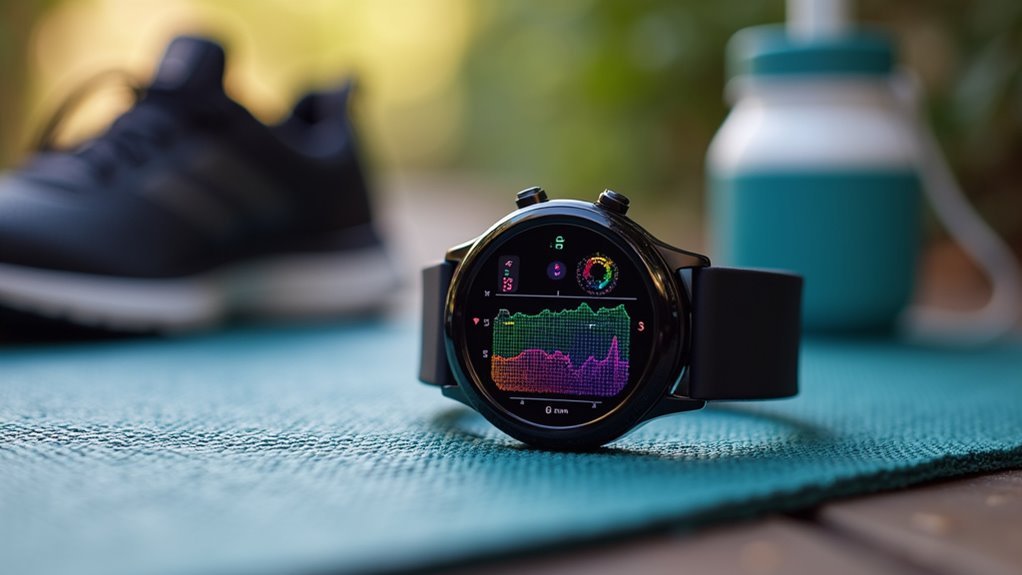
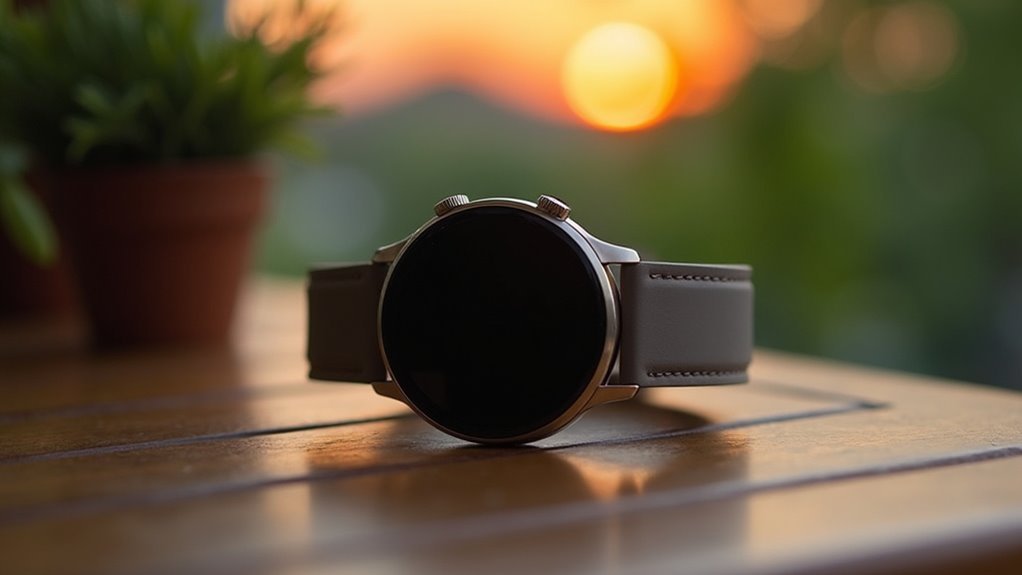
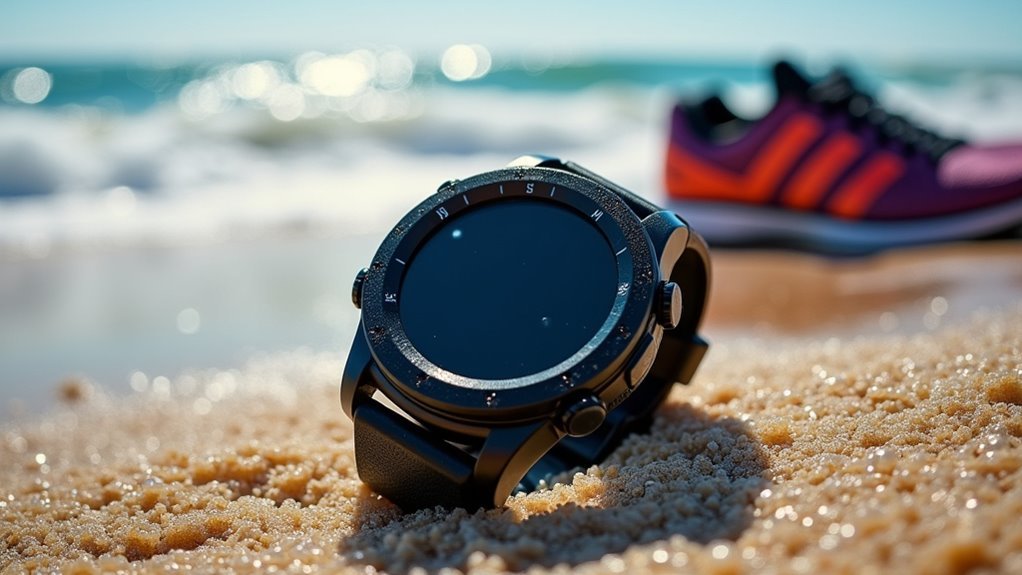
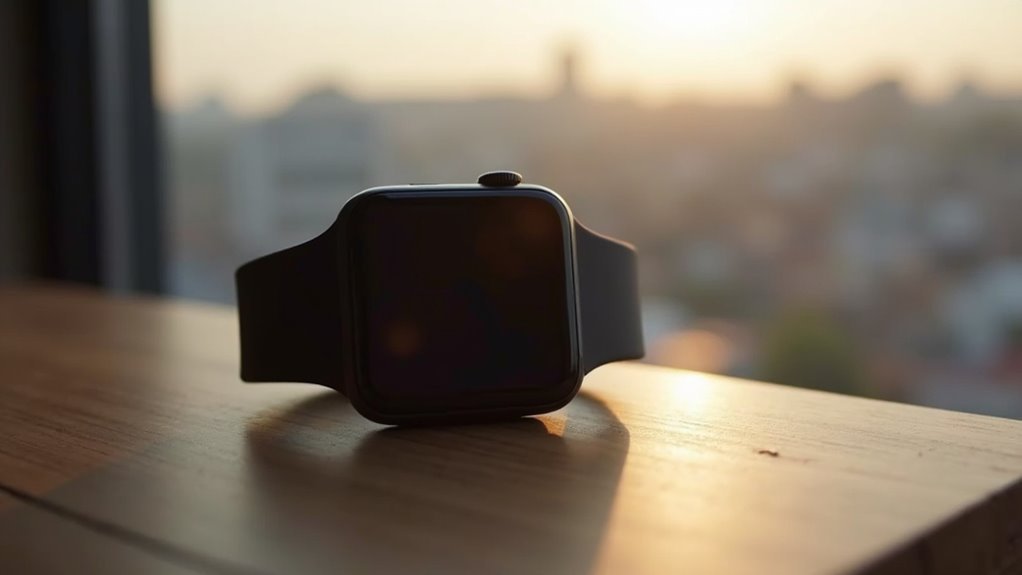
Leave a Reply